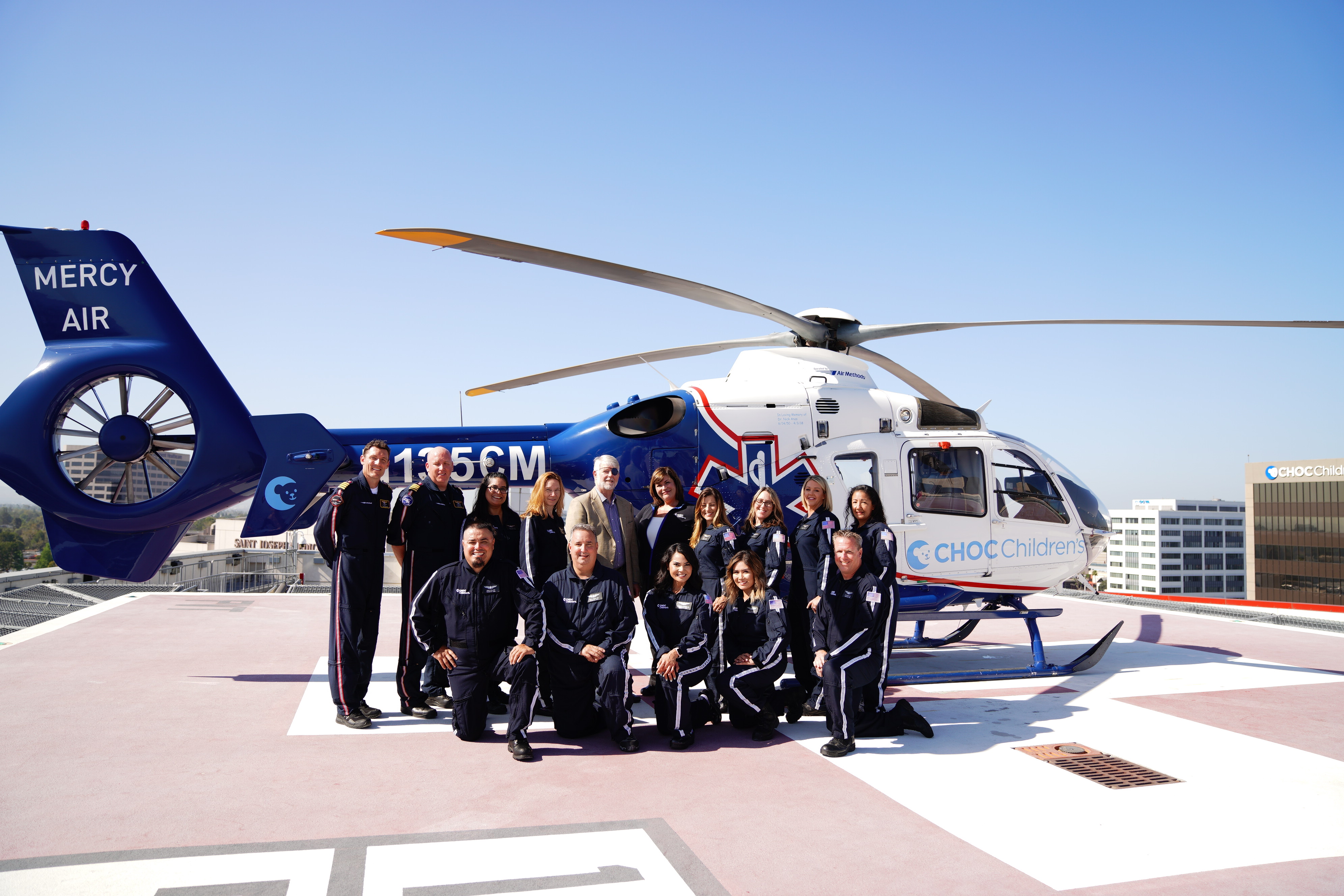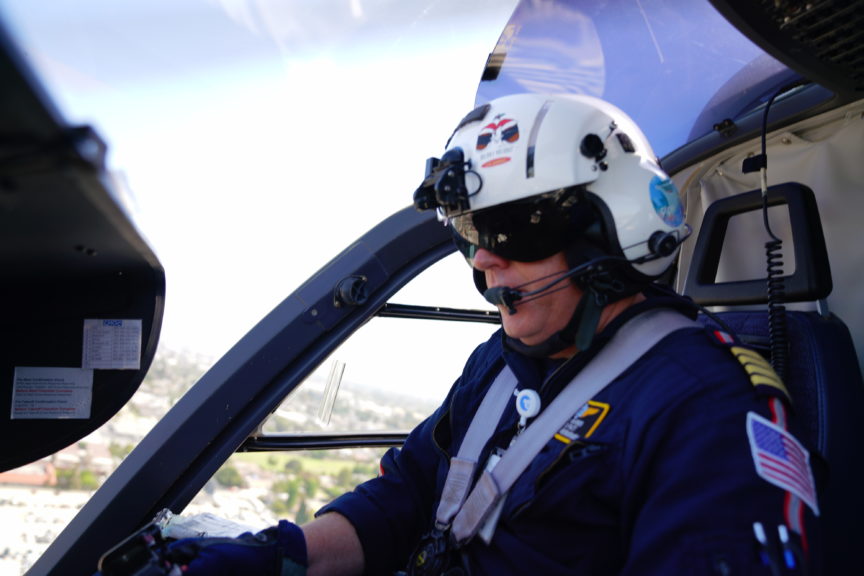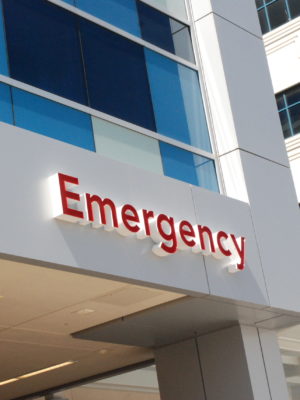Marking the launch of a new era for emergency transport services at CHOC, the “CHOC1” helicopter landed for the first time atop the Bill Holmes Tower at CHOC Hospital in 2018.
In just ten months, CHOC1 has clocked 200 flights, traveling all over Southern California, even as far north as Bakersfield, to transport critically ill patients to CHOC. On a typical afternoon, CHOC1 can fly to CHOC at Mission Hospital in a mere seven minutes, as opposed to driving for one hour in bumper-to-bumper traffic on the freeways.

The transport team is comprised of expert physicians, nurses and respiratory therapists. At the helm is Kevin Barber, lead pilot.
Throughout his 15-year career as a pilot, Kevin has flown many different types of aircraft on a variety of assignments, but he’s found the mission of flying children to be the most rewarding of his career. Prior to flying in the private sector, Kevin was a naval officer for seven years and holds a master’s degree in public administration.
“Aviation offers many different avenues but only being an emergency medical services pilot offers the ability to make a difference in your own community and help people on what is one of the worst days of their lives,” Kevin says. “Plus, the transport teams on our aircraft are top notch. There is a great amount of satisfaction flying with such professional physicians, nurses, respiratory therapists and paramedics.”
According to service partner Mercy Air, CHOC1 is the only helicopter in Southern California based out of a hospital, with four pilots and mechanics housed on site at CHOC, giving the transport team the ability to jump into action immediately.

State-of-the-art equipment on board
The helicopter is specially configured with high-tech equipment including neonatal isolettes and smart IV pumps that are loaded through the back of the aircraft and secured into a confined space.
One device in the helicopter is designed to cool critically ill newborn infants.
“To help reduce chances of neurological impairment in these sick newborn babies, cooling needs to be initiated within four to six hours of birth, or even earlier for better outcomes,” says Tari Dedick, manager of emergency transport services. “If we pick up a critically ill baby in the Inland Empire, we can begin cooling immediately at the bedside and continue the therapy in the helicopter on the way back to CHOC, saving precious time.”
Safety is the No. 1 priority for CHOC’s transport team.
Mercy Air maintains its Commission on Accreditation of Medical Transport Systems accreditation, which has stringent requirements about staff training, medical equipment and even what the CHOC transport team wears, including flight suits and helmets.
Among Kevin’s vast responsibilities as pilot is to closely track weight and balance restrictions. It’s often a tight squeeze in the helicopter, with every person and each device weighed prior to the flight to determine precise weight and balance.
Widening reach
CHOC’s transport team, using ground and air transportation, travels 100,000 miles each year to bring more than 4,000 patients to CHOC. Looking to the future, Tari says, the transport team anticipates eventually transporting trauma patients from all over Southern California to CHOC’s Level II pediatric trauma center.
“Without a doubt, CHOC1 is widening our outreach while bringing the Southern California community closer,” Tari says.





